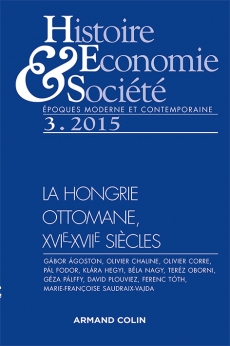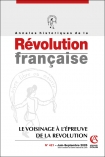
Histoire, économie et société (3/2015)
Pour acheter ce numéro, contactez-nous
Recevez les numéros de l'année en cours et accédez à l'intégralité des articles en ligne.
Après la bataille de Mohács (1526), la division du Royaume de Hongrie en deux parties fut un long processus plein de conflits intérieurs. Les ordres hongrois élurent deux rois après la bataille : Jean Ier Szapolyai (il régna de 1526 jusqu’à 1540) et Ferdinand Ier de Habsbourg (il régna de 1527 jusqu’à 1564). La double élection royale comportait déjà la possibilité de l’éclatement du territoire du pays si l’un des deux rois ne pouvait se débarrasser de son rival. Il en résulta le traité de Várad (Nagyvárad, aujourd’hui Oradea en Roumanie) en 1538 qui le territoire du pays entre les deux rois. Les parties orientales furent déchirées lorsque l’Empire ottoman s’empara de Bude en 1541. Après de nombreux conflits et quelques intrigues diplomatiques (notamment avec la France), un compromis fut trouvé. La Principauté fut créée finalement par le traité de Spire (1570/71) conclu par Jean Sigismond II Szapolyai (il régnait de 1559 jusqu’à 1571) etMaximilien de Habsbourg (il régnait de 1564 jusqu’à 1576). Le traité réglementa les relations entre les deux parties du pays et les deux souverains. D’après le texte du traité, Jean Sigismond renonçait à son titre de roi élu (electus rex) et il prit à sa place le titre de prince de Transylvanie et ses parties annexes (Princeps Transylvaniae et Partium regni Hungariae eidem annexarum). Le traité stipula qu’au cas où le prince mourrait sans successeur mâle la Transylvanie reviendrait à la Sainte Couronne de Hongrie comme sa partie réelle et inséparable (tanquam verum et inseparabile membrum) sous l’autorité du roi de Hongrie.
After the Battle of Mohács (1526), the division of the Kingdom of Hungary into two parts was a long process with grave inner conflicts. The Hungarian Estates chose two kings after the battle : János Szapolyai I (John I Szapolyai, r. 1526-1540) and Habsburg Ferdinand (r. 1527-1564). From the very beginning, the dual coronation made it virtually inevitable that if neither were to be able to defeat the other, the territories under their rule would also split in time. This was laid down in the Treaty of Várad in 1538 (now Oradea/Nagyvárad in Romania), which divided the territories between the two kings. The eastern parts of Hungary finally seceded after Buda was conquered by the Ottoman Empire in 1541. After several more conflicts and some diplomatic intrigues (particularly with the king of France), the two parts found a compromise. The Principality of Transylvania was finally created through the Treaty of Speyer (1570/71), which was signed by János Zsigmond Szapolyai II (John Sigismund II Szapolyai, r. 1559-1571) and Habsburg Maximilian (r. 1564-1576). The treaty codified the relationship between the two regions and their rulers. According to the treaty, János Zsigmond II gave up his title of elected king (electus rex) and took instead the title of Prince of Transylvania and the annexed parts of Hungary (Princeps Transylvaniae et Partium regni Hungariae eidem annexarum). The treaty declared that if the prince were to die without an heir, Transylvania, as a real and inseparable part of the Holy Crown of Hungary (tanquam verum et inseparabile membrum) would be ruled by the King of Hungary.

